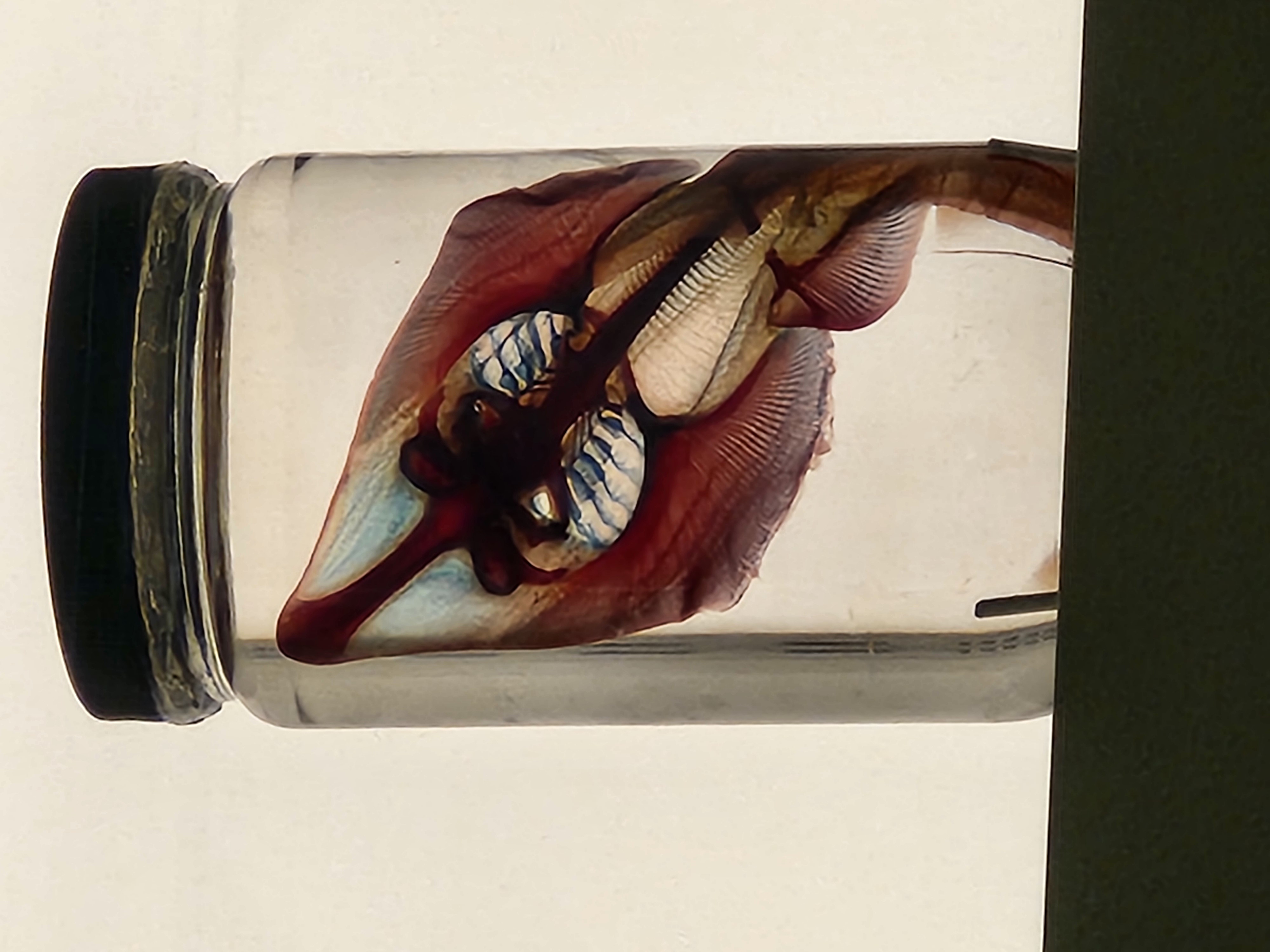Event name: American Museum of Natural History
Event time and place: New York, NY November 16, 2024
Dinosaur Halls

T-Rex skull fossil
While at the Museum Dr. Holtz took us on a tour through the dinosaur halls containing lots of fossils and information about dinosaurs. The halls were organized by evolutionary relationships of the dinosaurs. As you walk through the exhibits large signs will show graphics of evolutionary traits in the dinosaurs and every species past that point will have the displayed trait.
In the dinosaur halls were some very interesting fossils including one of the few complete titanosaur skeletons available on display in the world. There was also a fossilized T-Rex skull that was very well preserved and placed near the ground, so it was easy to see all the details of the fossil. The exhibit had plenty of great information but there were some parts of it that were outdated. There was a skeleton that was labeled as a Brontosaurus, but the name is outdated. The label of the skeleton should be updated to display the correct name. Also, one skeleton of a stegosaurus displays the spikes on its tail pointed upward even though they were believed to point sideways. The mounting of the skeleton should be changed to display the shape of the species tail more accurately.
Collections Core

Cleared and stained ray
Dr. Fletcher showed us around the Collections Core in the museum. There were many different types of specimens that the museum collected and displayed in this section. One wall contained many samples of coral. In order to get these samples, they need to be collected from the oceans and prepared for display. Before being displayed the samples need to be dried. This will preserve the hard skeleton of the coral but the soft tissue on the outside will be lost. The collection of coral is especially useful because it allows scientists to study how coral reefs have changed in the past 200 years. As coral becomes more endangered in today's environment this information is increasingly valuable. It also raises ethical concerns when it comes to collecting samples because if not removed in a sustainable way, the collection can damage the species and negatively impact the ecosystem it is removed from. Another wall had samples of fish and rays on display. These specimens are also collected from the ocean. chemicals are used to remove the tissues from the fish. Then the remaining bones and cartilage are stained which gives the specimen a clear outside with colored insides. The specimen is then suspended in liquid and placed in a jar to be preserved.
Hall of Human Origins

Bone harpoons
While at the museum I visited the Hall of Human Origins. The hall is organized chronologically to show how humans evolved from their most primitive forms to their most modern forms. There were some tools on display in this hall. Samples of laurel leaf flint blades were displayed. They are about 20,000 years old and were found in Volgu, France. many similar blades were made of Jasper, quartz, or other materials that make the blades prettier. Some are also very thin which leads to the belief that these blades were used ceremoniously or as a sign of high status during the ice age. The hall also contained ancient artwork in the form of carved figures. There were samples of a mammoth, horse, and feline figurines carved out of the ivory tusk of a mammoth. These figurines are 32,000 years old and were found in Vogelherd, Germany. These figurines are some of the oldest works of art discovered to date and carry x-shaped markings of unknown meaning. Ancient tools were also displayed. Bone harpoons that are between 60,000 and 90,000 years old and found in Katanda, Democratic Republic of Congo. These are some of the oldest known tools crafted using bone. They were also found near catfish bones leading to the belief that the harpoons were used as a fishing tool.
Space Show
The museum had a space show titled "Worlds Beyond Earth" that took us on a journey through our solar system. It showed many details about the planets and other bodies in our solar system. Some of the things shown were the orbits of the planets in our solar system, the trajectories of asteroids in the asteroid belt, and the topography of the planets. I learned that Mars is very volcanically active and has the largest volcanoes in our solar system. The show was very advanced, and it was clearly based on a great number of measurements and information.
General Thoughts
The American Museum of Natural History tour was a great experience. The museum had many different features to make the experience enjoyable for people of any education level. It had fossils that were constructed with intricacies like the correct placement of hip bones that can entertain experts like Dr. Holtz. There were also plaques and labels that had information for less informed visitors to read and learn about what was being shown in the exhibits. There were also videos that would play to share information which can inform people who may not want to or be able to read. Overall, the trip was amazing, and I am grateful for SGC giving me the opportunity to visit the American Museum of Natural History.





